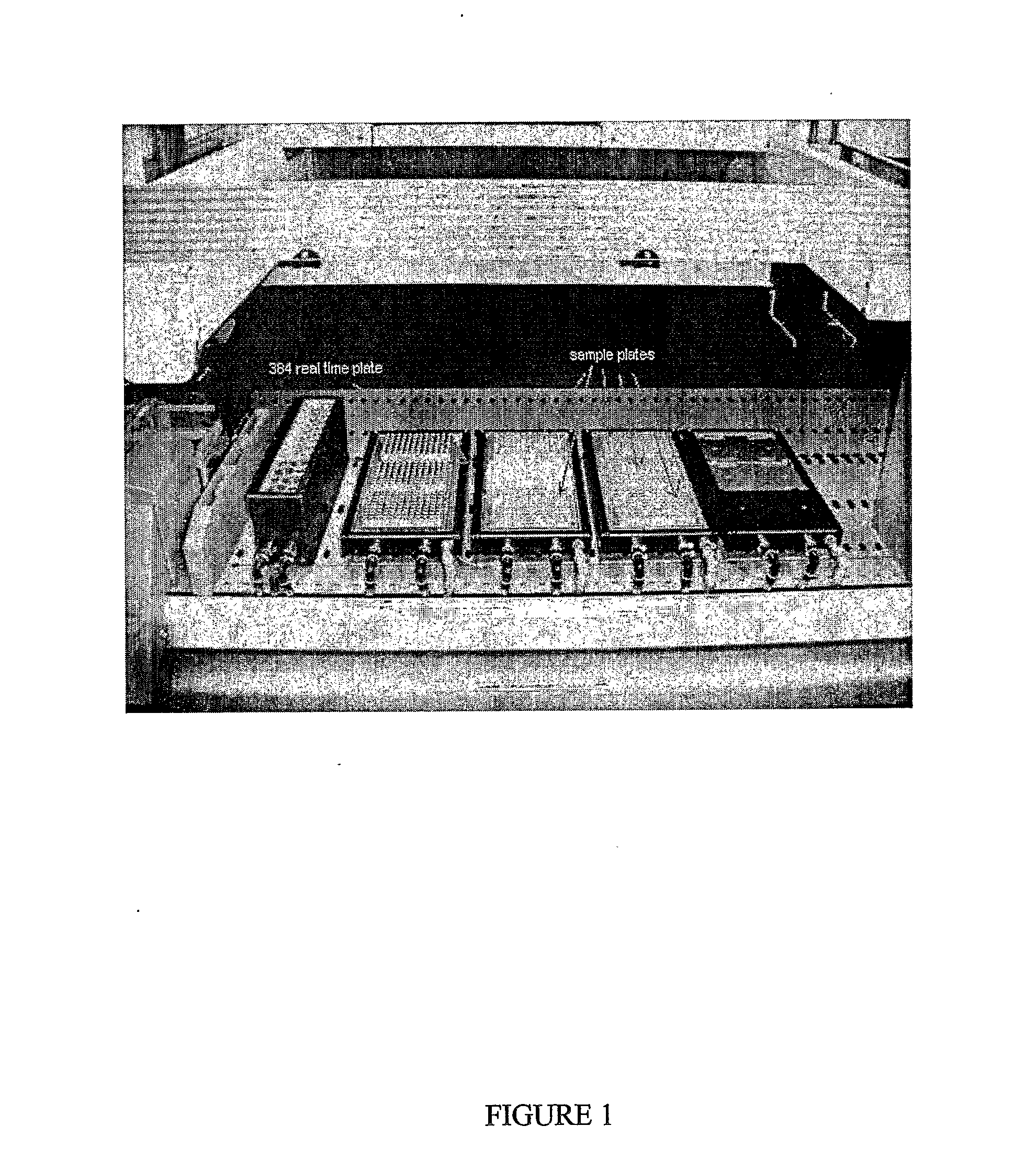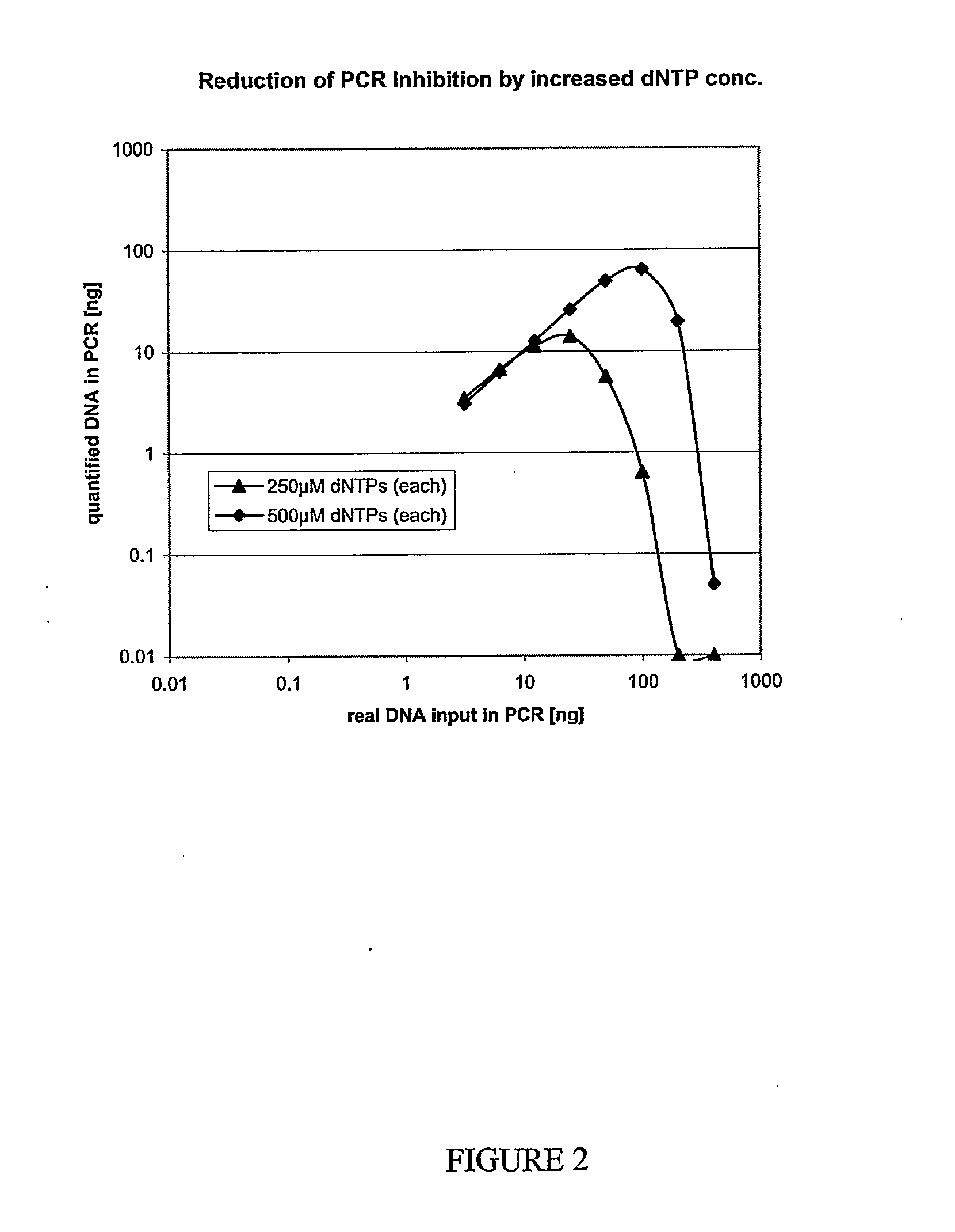Method For Providing Dna Fragments Derived From An Archived Sample
- Summary
- Abstract
- Description
- Claims
- Application Information
AI Technical Summary
Benefits of technology
Problems solved by technology
Method used
Image
Examples
example 1
a) Paraffin Removal Step
Chemical Needed:
Limonenel45, Fluka Chemika, Art Nr. 89188
Procedure:
[0432] 1. Spin safe look or screw cap reaction tubes (containing 1-5 sections of a paraffin-embedded formalin-fixed tissue) for 1 min at 5,000×g [0433] 2. Add 1 ml limonene to each tube. Push all pieces into the liquid. In some cases sample material is already very brittle with small pieces of paraffin / tissue in tube—make sure that material sticking to the tube cap goes back into the tube. [0434] 3. 1 h incubation at room temperature at 1,000 rpm in thermomixer, vortex vigorously at least 3 times during incubation. [0435] 4. Place tubes into centrifuge and spin at 16,000 rcf (=16,000×g) for 5 min, the tissue will pellet at the tube bottom. [0436] 5. Use a 1 ml pipet to suck up the limonene from each sample. Great care should be taken not to disturb the pellet! Place pipet tip opposite the pellet onto the tube and gently allow limonene to enter the pipet tip; for removal of last droplets...
example 2
[0541] All steps will be done in the tubes that the samples are provided in, i.e. the tubes provided by the supplier of the samples, these can be both 1.5 and 2.0 ml (preferred) tubes. Please double check that tube formats fit into the centrifuge.
[0542] The solvents and buffers can be delivered with either single channel pipettes or multipettes
a) Removal of Paraffin
Chemical Needed:
Limonenel45, Fluka Chemika, Art Nr. 89188
Procedure:
[0543] 1. Add 1 ml limonene to each tube (containing 1 to 5 slides of paraffin-embedded formalin-fixed surgery sample). Push all pieces into the liquid. In some cases sample material is already very brittle with small pieces of paraffin / tissue in tube—make sure that material sticking to the tube cap goes back into the tube. [0544] 2. 1 h incubation at room temperature at 1,000 rpm, vortex vigorously at least 3 times during incubation. [0545] 3. Place tubes into centrifuge and spin at 16,000 rcf (=16,000×g) for 5 min, the tissue will pellet at the...
example 3
[0649] All steps will be done in the tubes that the samples are provided in. The tubes can be both 1.5 and 2.0 ml tubes. Please double check that tube formats fit into the centrifuge.
[0650] The solvents and buffers can be delivered with either single channel pipettes or multipettes
a) Removal of Paraffin
Chemical Needed:
Limonenel45, Fluka Chemika, Art Nr. 89188
Procedure:
[0651] 1. Add 1 ml limonene to each tube (containing 1 to 5 sections of a paraffin-embedded formalin-fixed tissue). Push all pieces into the liquid. In some cases sample material is already very brittle with small pieces of paraffin / tissue in tube. Make sure that material sticking to the tube cap goes back into the tube. [0652] 2. 1 h incubation at RT at 1,000 rpm, vortex vigorously at least 3 times during incubation. [0653] 3. Place tubes into centrifuge and spin at 16,000 rcf (=16,000×g) for 5 min, the tissue will pellet at the tube bottom. [0654] 4. Use a 1 ml pipet to suck up the limonene from each sample...
PUM
| Property | Measurement | Unit |
|---|---|---|
| Temperature | aaaaa | aaaaa |
| Temperature | aaaaa | aaaaa |
| Temperature | aaaaa | aaaaa |
Abstract
Description
Claims
Application Information
 Login to View More
Login to View More - R&D
- Intellectual Property
- Life Sciences
- Materials
- Tech Scout
- Unparalleled Data Quality
- Higher Quality Content
- 60% Fewer Hallucinations
Browse by: Latest US Patents, China's latest patents, Technical Efficacy Thesaurus, Application Domain, Technology Topic, Popular Technical Reports.
© 2025 PatSnap. All rights reserved.Legal|Privacy policy|Modern Slavery Act Transparency Statement|Sitemap|About US| Contact US: help@patsnap.com



